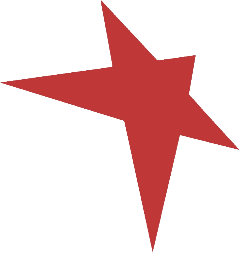The path ahead for Block Everything isn’t straightforward. But it has a chance to remake the political landscape in France.
George Martin Fell Brown, Socialist Alternative (ISA in the United States)
(This article was first published on 22 September 2025)
Across France on 10 September, the streets saw protesters blocking highways, burning barricades, and setting up grassroots general assemblies, all while fending off attacks from the police. The previous day, the government collapsed when Prime Minister François Bayrou resigned following a vote of no confidence the day before. 18 September reportedly saw even greater numbers take to the streets, during a day of widespread strike action. These protests show that France’s crisis is too deep to be fixed by replacing a single politician.
The spark that kicked off both the protests and the government collapse was the austerity measures proposed by Bayrou in July. These entailed public spending cuts amounting to €43.8 billion, a freeze on pensions, the elimination of two public holidays and numerous other attacks. Popular anger grew from below, spreading on X, TikTok, Telegram and Facebook. The date of September 10 was called for a general strike, and the movement adopted the name Bloquons Tout, or Block Everything.
France is no stranger to mass protests and strikes. In 2018-2019, the country was similarly shaken by the Gillets Jaunes (Yellow Vests), a loose protest movement organized on social media. This time, however, the crisis in French society is deeper. The hated president Emmanuel Macron has barely held himself in power faced with rising political polarization on both the left and the right. This has been part of a growing polarization across Europe and around the world.
The path ahead for Block Everything isn’t straightforward. But it has a chance to remake the political landscape in France.
Macron’s government in crisis
Following the 2008 global financial crisis and the subsequent European sovereign debt crisis, global politics was shaken as new anti-establishment parties and politicians, on the right and the left, rose to challenge the neoliberal order. When Macron was first elected in 2017, he was seen as the savior of the neoliberal establishment. He could fend off the far-right Marine Le Pen while still ramming through vicious austerity measures. He was the proof that the center could hold after all. But his nearly decade-long rule has always been tenuous.
Even in 2017, the election was nearly a very different one, where Le Pen would face off against the insurgent left candidate Jean-Luc Mélenchon instead in the second round. When Macron soundly defeated Le Pen, it was far more of a vote against Le Pen than a vote for Macron. Barely a year into his presidency, he was faced with the Yellow Vests. This mass movement, spurred on by Macron’s regressive fuel tax, and continuing in the face of severe police repression, was one of the biggest protests in France since the May 1968 general strike.
Even after those protests died down, Macron has only been able to barely maintain a functioning government. Macron’s hated 2023 pension reform–which raised the retirement age from 62 to 64–provoked the biggest mass strike wave since 1968, which saw 2.8 million take part according to the CGT, the country’s largest union. It was only the lack of an escalatory strategy from the union leadership that allowed the pension reform to pass. Even though Macron could get it through, popular resentment meant a new crisis was inevitable.
In 2024, the crisis broke out into the open again. The 2024 European Parliament elections saw a large plurality of France’s seats go to Le Pen’s far-right National Rally, who leaned on disgust at Macron’s attacks to whip up racism and xenophobia. In response, Macron dissolved the parliament and called snap elections. His hope was that the shock of the far-right victory would rally people behind him like it did in 2017. And people did rally against Le Pen. But instead of Macron, it was Mélenchon and his New Popular Front coalition that came out with the most seats.
In spite of the New Popular Front’s victory, Macron has been able to keep a minority government sputtering along. After the election, Prime Minister Gabriel Attal resigned but remained head of a caretaker government until Macron appointed the conservative Gaullist Michel Barnier. Barnier became France’s shortest serving Prime Minister. After trying to force through Macron’s austerity budget without a vote, both the New Popular Front and National Rally put forward a vote of no confidence. Bayrou succeeded him and also attempted to ram through Macron’s austerity measures, only to face a no confidence vote himself just as the Block Everything protests were getting ready to pour into the street.
Macron has not been able to stay in power for so long because of any mass basis of support for his agenda but rather by parliamentary maneuvers, political gridlock, and a lack of a clear program on the part of the workers’ leaders. That can only go so far before everything breaks out.
Block Everything
With Block Everything, the crisis of the Macron government once again spilled out into the streets. Comparisons have inevitably been drawn with the Yellow Vests. Both started as spontaneous and “leaderless” movements organized on social media rather than through the unions or political parties. The protests are bringing fresh energy into the struggle, with newly radicalized layers taking to the streets and organizing general assemblies. Unlike the Yellow Vests, the Block Everything movement has attracted far more youth.
Caroline, an ISA member in Aix-en-Provence near Marseille in the south of France, said this about the protests there: “The protests in Aix-en-Provence gathered close to 2,000 people. I saw lots of students and people who were protesting for the first time.” This is in a city with a population of 150,000. The CGT estimates that the total protests across the country on 10 September add up to 250,000. Meanwhile authorities deployed more than 80,000 security personnel.
This is an exciting development, but there are limits on what can be achieved through a “leaderless” protest organized on social media. The Yellow Vest movement had higher numbers at its peak but ultimately dissipated. The ruling class is hoping to wait this struggle out, too. Outgoing Interior Minister Bruno Retailleau dismissed the protests, saying “those who wanted to block the country failed to do so.”
One big issue is that the call to “block everything” wasn’t properly taken up by the union leadership. The 2.8 million on strike at the pension protests show what can be accomplished when the workers’ own organizations put their weight behind a struggle. But the conservative leadership of the union saw the movement as a bunch of outsiders. Fortunately the strength of the movement did pressure the unions to support some strike action. This included both authorizing strikes on the 10th itself as well as a larger day of strikes which took place on 18 September, accompanied by demonstrations of over one million people.
On this Caroline reported: “The broad grass roots organization of the 10th forced the CGT to support a strike authorization. Locally, many union coalitions called to support the protests and supported strike authorization. For example in Aix-en-Provence, the hospital workers walked alongside the protests. Workers in the energy sector joined the Marseille protest from the picket line.”
“The spontaneous organizing of the 10th has the potential to overtake the strategy of the union bureaucracy that failed during the pension reform protest, but they need a clear plan to escalate, which is still lacking so far.”
With fresh layers moving into struggle and no established structure, the demands of the movement are all over the place. Calls for revolution are mixed with calls to boycott the national banks and buy local. But the energy is there.
The danger is that the movement will dissipate while the union leadership will back down, allowing Macron to reassert control. This is why the energy of the movement should be clearly directed to call on the CGT and other unions to organize a general strike to bring down the government.
Political representation
Following François Bayrou’s resignation, Macron appointed Sébastien Lecornu as prime minister, rather than call new elections. The main strategy of Macron and Lecornu is to try to pluck away the more conservative forces in Mélenchon’s New Popular Front. Through this they hope to pass their austerity budget while simultaneously increasing defense spending.
Mélenchon’s own party, La France Insoumise, is the largest party in the coalition and firmly on the left. However, the coalition also includes pro-capitalist parties like the Socialist Party and the Greens, who Mélenchon is relying on to maintain his bloc in parliament. Mélenchon and La France Insoumise put forward a radical, working-class program and have been the main forces in parliament to actively champion the Block Everything protests, including calling for a general strike. However, Mélenchon has built the party around him as a figurehead rather than a party based on an active mass membership, and has relied excessively on parliamentary maneuvers with the more conservative parties in his coalition.
Block Everything has the potential to give new life to La France Insoumise. A fresh influx of radicalized members can not only boost the party’s support, but transform it into a party of struggle that fights in elections and in the streets.
We’ve seen similar phenomena in Britain and Germany. In Britain, former left Labour leaders Jeremy Corbyn and Zarah Sultana launched Your Party, which saw over 750,000 people sign up in a matter of weeks. In Germany, Die Linke, the main left party, was in decline due to political compromises made by the party leadership. But mass anger at Prime Minister Friedrich Merz making overtures to the far right saw an influx of youth into the party, reviving it as the main left-wing opposition in the country.
Britain and Germany also show the danger that the movement in France faces. Anger at British Prime Minister Keir Starmer has fueled the growth of both Your Party and the far-right Reform UK of Nigel Farage. Anger at Merz has fueled the growth of both Die Linke and the far-right Alternative für Deutschland. And while the crisis in France has seen the growth of La France Insoumise and the Block Everything protests, it has also seen the growth of the National Rally.
National Rally campaigned on economic populism, including calls to reverse Macron’s retirement reform. But they’re viciously xenophobic and anti-immigrant, with historical ties to France’s fascist Vichy government. After the failure of the strikes against that reform, it was National Rally that benefited, coming out on top in the European elections in 2024. It was in response to that shock that the New Popular Front was able to overtake them in the parliamentary elections.
La France Insoumise should seize upon the Block Everything movement to launch, alongside trade unionists and the genuinely left parties in the New Popular Front, a mass, democratic party of struggle that can give political expression to the movement. We need a fighting movement in the streets and in the ballot box that can take on Macron’s austerity agenda and beat back the threat of the far right. Building off of a wave of occupations, strikes, and general strikes, such a party can completely reshape politics in France and even internationally.
The movement will need to be equipped with an uncompromising program for socialist change. It should fight to reverse the pension reform and stop Macron’s austerity budget in its tracks. Beyond that, it should campaign to cut military spending and halt all aid to Israel’s genocidal war. It should stand up for immigrants against attacks from the government and the far right. And it should fight to take the top 100 corporations into public ownership under democratic workers’ control. Through a program like this, a movement like Block Everything can win unity in action for workers, farmers, migrants and young people.




